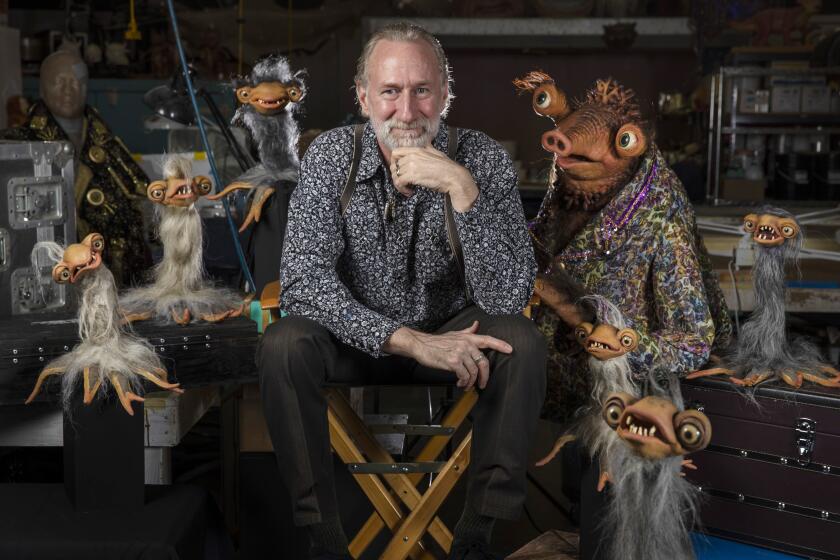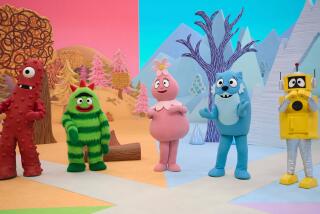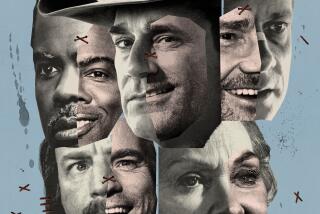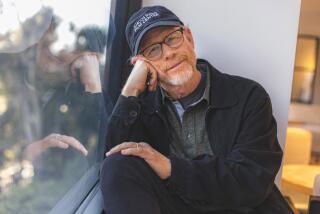Hilarious and profound, the new ‘Fraggle Rock’ is a thing of beauty
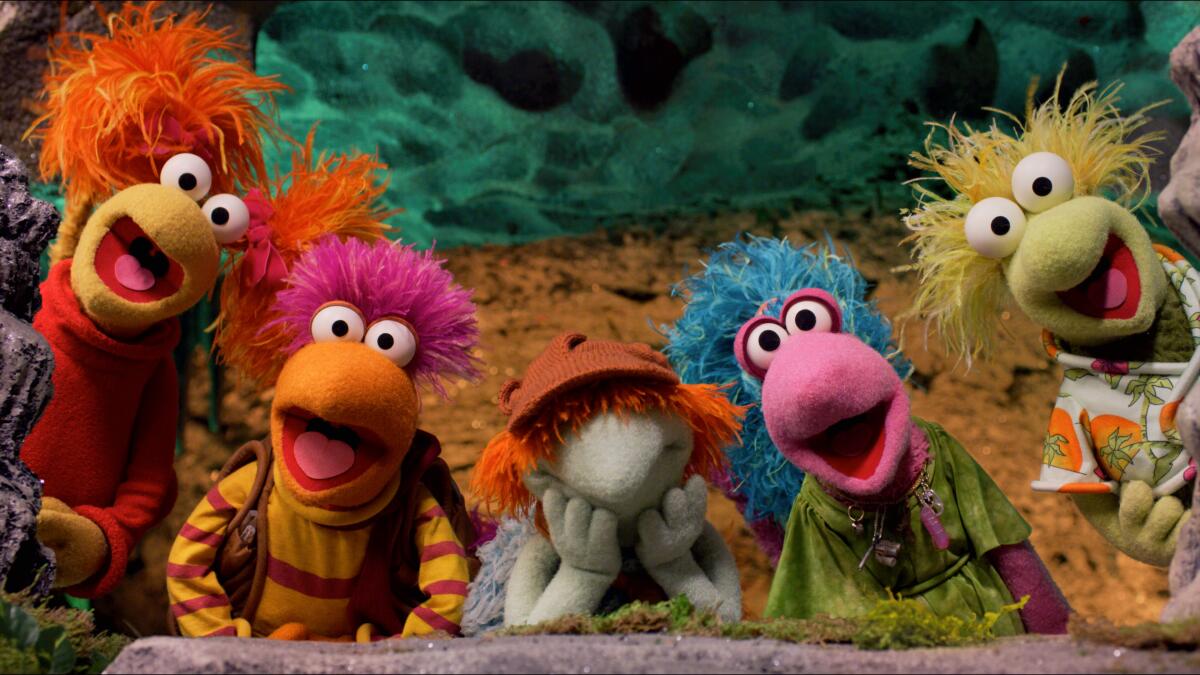
After more than three decades, Jim Henson’s “Fraggle Rock” gets a full-series revival Friday on Apple TV+, fashioned as a 13-part serial, with episodic elements, that plays adroitly to the original’s themes of interdependence and self-acceptance. Apple had earlier streamed “Fraggle Rock: Rock On!,” a modestly produced series of shorts from Year One of the pandemic, modeled on Zoom calls and remote musical collaborations and clearly meant to impart to younger viewers a sense that even if things were no longer normal, they could still be good. As with all things Fraggle, some of it may have rubbed off on their parents as well.
“Back to the Rock” is anything but a modest production. There have been substantial advances in puppetry and digital effects since the first series, which ran from 1983 to 1987; the 21st century high-resolution widescreen television allows for bigger sets, bigger crowds, bigger production numbers — a water ballet, a “Soul Train” dance line — and more details in the characters and clothing. The Grand Hall of the Fraggles is really grand (with a waterfall, and a Doozer monorail running through it). The photography and lighting are first-rate. It is all quite beautiful.
Most importantly, “Back to the Rock,” developed by Alex Cuthbertson and Matt Fusfeld (whose credits include “New Girl” and “Community” but nothing with puppets or for children), has been made with a believer’s fealty to the original, in terms of character, humor — it’s very funny — and its main message: We are all connected and must learn to listen.
Brian Henson, chairman of the Jim Henson Co., talks about growing up around Muppets and the role only 30 to 50 people in America are capable of performing.
That we humans — Silly Creatures, as the show rightly dubs us — seem ever farther from this ideal might lead one to wonder whether messaging in children’s programming can change the world, but it can certainly improve the world of the viewer during the space of watching it, and both then and now, it’s the sort of show whose positive attitudes, subtle jokes and sophisticated language help build strong, flexible adult minds. (Sentences like “Clutter is the manifestation of freedom” and “You can’t get bogged down in semantics” are not the stuff of every children’s show.)
And, unlike whatever comes branded as Muppet, owned now by Disney, the Fraggles still belong to the Hensons. “Fraggle Rock” performers Karen Prell and Dave Goelz are back for “Back to the Rock”; other puppeteers — notably including John Tartaglia, who went to work on “Sesame Street” at 16, was nominated for a Tony for “Avenue Q” and has writing credits here — have experience on Henson shows, or have already performed these characters live. (Special guest voice artists include Cynthia Erivo, Kenan Thompson, Daveed Diggs and Ed Helms.)
For those not in the know, Fraggles, classic Henson creatures with pingpong ball eyes, moppy hair, floppy arms and puff-ball-tipped tails — perfectly formed to express exhilaration — are a race of cavern-dwelling creatures who live to dance, play, sing and explore; they love games and holidays (the new series packs them in) and get by on a 30-minute workweek. The Doozers are, by contrast, a race of tiny compulsive builders who grind radishes (the Fraggles’ favorite food) into crystalline Doozer sticks, from which they make elaborate constructions the Fraggles like to eat, thereby creating more space for the Doozers to build.
The radishes are appropriated from the garden of the Gorgs, troll-ish creatures that recall Maurice Sendak illustrations and live above the Fraggles in (something like) the open air. They are represented entirely by Ma and Pa, who affect royal airs, and their son, Junior, whom they torment. (Ma and Pa are minor presences in the new series, with little of the affection they sometimes displayed for their son in the earlier show; Junior’s primary emotional relationship in “Back to the Rock” is with a plant, and it is rather moving.) A well in their garden leads to the Fraggles’ Great Hall; also on their property is an all-seeing trash heap named Marjory (Aymee Garcia), with the voice of a Jewish mother, from whom the Fraggles receive mystical advice.
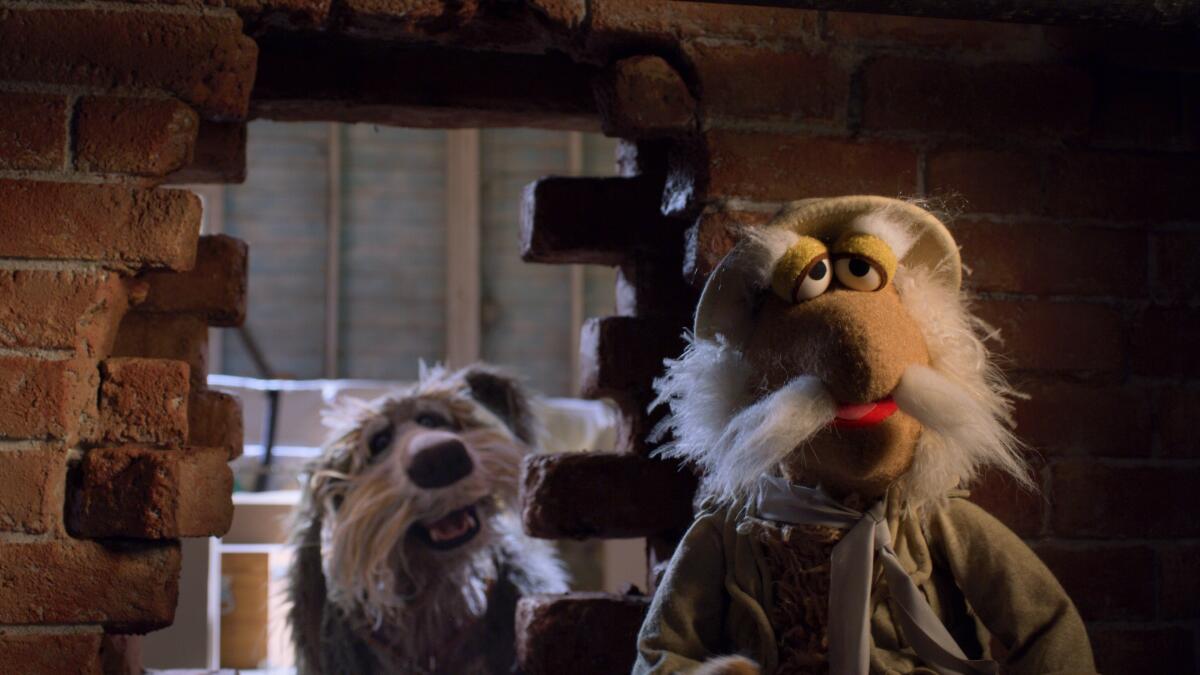
The series centers on five young friends, who are as you may remember them. It’s important that within the bounds of their Fragglehood, they represent distinct individuals because accepting difference, in oneself and others, is a recurring theme of the series. They are Gobo (Tartaglia), an adventurer with a Canadian accent, accentuating his niceness; Red (Prell), excitable and physical; Mokey (Donna Kimball), a little older, spiritual; Wembley (Jordan Lockhart), a little younger, indecisive, with a tendency to hyperventilate; and Boober (Goelz, puppeted by Frank Meschkuleit), depressive, introverted, devoted to laundry.
Puppets don’t age, unless you rebuild them to. The unavoidable change here, 35 years on, is the show’s resident human, who lives in a back house where a hole in the wall leads to the Fraggle universe; the Fraggles, for their part, regard the human side as “Outer Space,” reported on in filmed pieces by Gobo’s explorer uncle Traveling Matt (Goelz, puppeted by Kevin Clash), who gets everything about it wrong. (His name is a pun on “traveling matte,” a special effects process; Gobo is the name for a screen that hides a camera lens from light.) The tenant is no longer an elderly inventor but a young woman (Lilli Cooper) working toward a doctorate in marine biology; like her predecessor, she is called Doc and has a dog named Sprocket (Tartaglia). Her career goal is perhaps a nod to the original Doc’s passing mention, in the final “Fraggle Rock” episode, of a failed plan to start a “marine biology business”; similarly, new Doc’s unseen landlady is a Mrs. Shimmelfinney, referencing old Doc’s unseen friend and neighbor, Ned Shimmelfinney.
There are some discontinuities between the original and new series. While Uncle Traveling Matt is going “back” to Outer Space, in the opening episode of “Back to the Rock” he shows Gobo the portal as if for the first time — though the character spent the first series sneaking through it to grab his uncle’s postcards out of the trash. (In the new show, he will receive packages containing misidentified human “artifacts” — bubble wrap is interpreted as “a squishy crystal cloak.”)
Similarly, the Fraggle Five have no previous knowledge of Marjory, though they met her often through “Fraggle Rock.” These are small things, I suppose, which are soon overtaken by more pressing Fraggle matters, but even as an adult, they bother me a little. (Sequel? Reboot?) For a kid who might have watched the original, whose 96 episodes are also streaming on Apple TV+, it might occasion some cognitive dissonance; certainly, as a child, I would have spent far too much time trying to puzzle it out.
With the classic “The Muppet Show” now streaming on Disney+, Times TV critic Robert Lloyd explains the meaning and majesty of Jim Henson’s iconic creations.
Water as a limited, corruptible resource drives the plot. (It’s also an issue for Doc, as a marine biologist, and while she doesn’t interact with the Fraggles, her portion of each episode reflects the themes of the puppet story.) The main storyline throws a wrench into the ecological balance between the Fraggles, Doozers and Gorgs — and getting back from the breakdown is the season’s work. On the way, the Fraggles naturally find time to dance, sing, party and play games, which they regard almost as a panacea; at the same time, facts keep getting in the way.
Themes include sustainability, advertising, industrial pollution and letting nature do what nature does. The show is not particularly subtle with its messages, especially when making them the subject of a song — it is not “Fraggle Rock” without songs — though some metaphors will make more sense to older viewers, as when Mokey finds herself trapped in an echo chamber, where talking rocks parrot her own views back to her. “A great pause now will make a greater, more sustainable change for tomorrow,” says Cotterpin Doozer (Kimball), something of a free thinker among her never-pausing kind and a major player in “Back to the Rock” — something for adult Silly Creatures to consider as we continue to drive full speed into the teeth of the climate crisis.
Everything works. But what makes the series so exciting is that, digital compositing and cleanup aside, we are seeing, nearly all the time, real figures on real sets, whether controlled by humans standing beneath them or by radio control or inside suits or some combination thereof, and there is a kind of magic in knowing this. The textures are palpable. The Fraggles and Fraggle Rock are evidently handmade and at the same time actual and alive — something you could become part of, could make yourself, potentially. It prickles the mind.
More to Read
The complete guide to home viewing
Get Screen Gab for everything about the TV shows and streaming movies everyone’s talking about.
You may occasionally receive promotional content from the Los Angeles Times.
